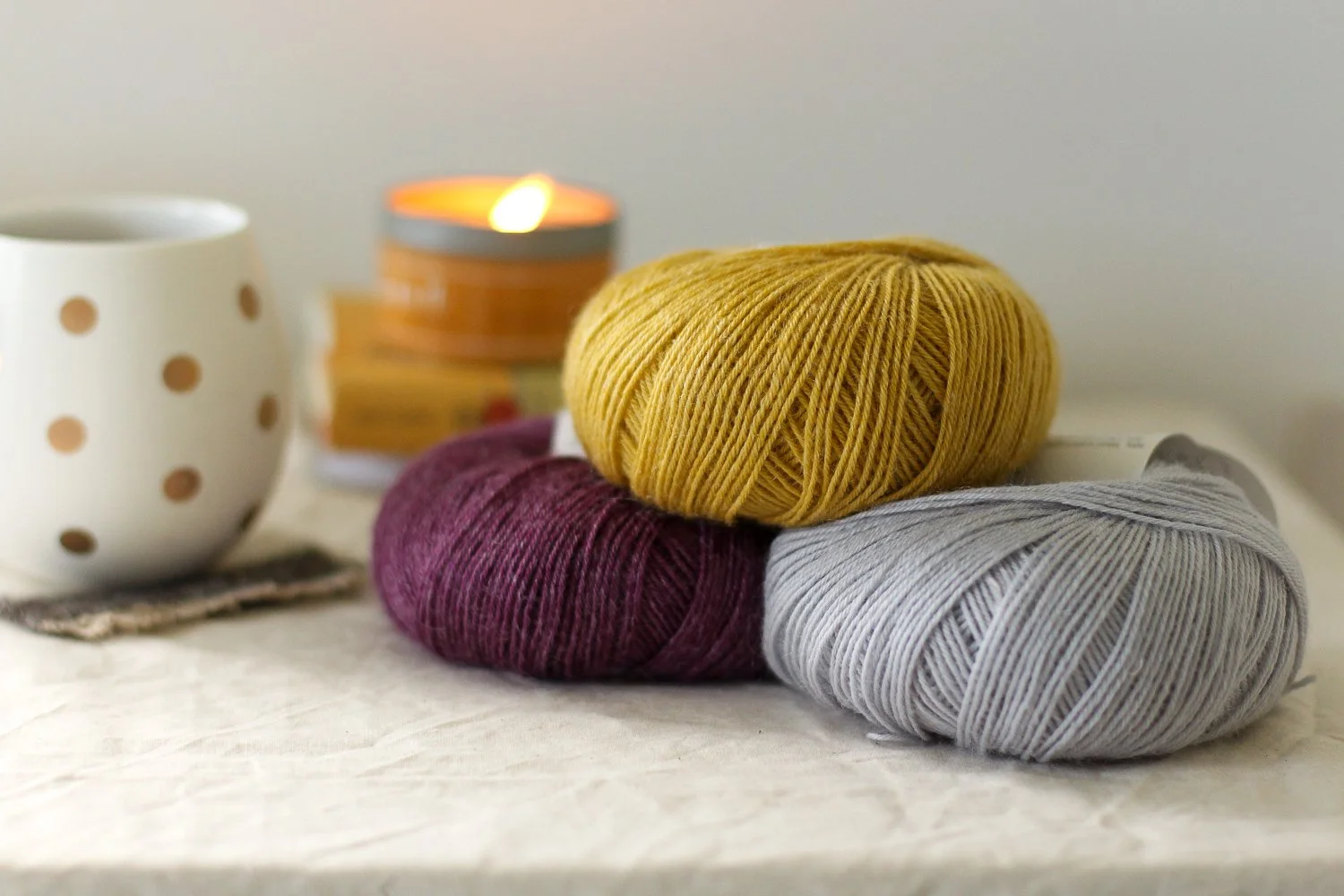3 Common Questions from Beginner Knitters
New to the world of knitting? A plethora of inspiring patterns and delightful yarn awaits you. As excited as you are to get started, you might hit a few roadblocks.
Knitting is a fun, joyful activity - try not to get stressed when you’re a beginner knitter. Tackle each new technique as it arises, and before you know it you’ll be knitting and purling without a second thought.
In my Beginner’s Knitting Workshop I include a PDF Guide for Beginner Knitters. Today I’m sharing some excerpts from the Guide, to help answer 3 common questions beginner knitters ask.
What is Knitting Gauge?
Also know as tension, knitting gauge refers to the number of stitches on your needle x the number of rows worked.
The standard way to measure gauge is over a 10cm/4” square. i.e 28sts x 30 rows = 10cm/4” on 4mm needles in stst.
Why does gauge matter?
It’s a way of determining how big your stitches and rows are, so that you know how big your finished item will be. This makes it quite important when you’re knitting garments or anything that needs to be a particular size when finished; it's a particular stress for new knitters.
The common misconception is that the tighter the knitter pulls the yarn, the neater the knitting will become. This is untrue and results in tight stitches that are difficult or even impossible to knit into.
My advice: Knit!
Don’t worry about your gauge or neatness. The more you practise the neater your knitting will naturally become.
Everyone has their own unique gauge, effected by the way you handle your yarn and knit into your stitches. Over time, you’ll develop a rhythm to your own knitting and your gauge will become consistent.
This is why scarves are good projects for beginners - by the time you reach the end of your knitting it will be quite neat and you will have found your natural gauge.
What is Yarn Ply?
Yarn comes in different thicknesses known as ply or weight. Some yarn weights are traditionally used for certain projects - for instance, socks are traditionally knitted in 4ply yarn. The smaller the number, the thinner the yarn. For example, 2ply yarn is a thin, lace weight thread. Whereas 14ply yarn is a thick, chunky yarn.
Here is a list of common ply & their alternate names:
2ply / Laceweight
4ply / Fingering weight
5ply / Sport
8ply / DK (double knit)
10ply / Aran or Worsted
How to read a knitting pattern
Knitting patterns can look so overwhelming when you’re new to reading them. Everything is broken down into abbreviations and if you’re thinking it looks like code, you’re not wrong!
Did you know that during WW2 mailing knitting patterns was banned as they could be used to hide code? How cool is that!
The good news is, knitting code isn’t one that’s hard to decipher. With a bit of practise it will become second nature.
The reason patterns are presented in abbreviated format is to save room on a page (patterns would become very long if everything was written in long-form!).
It also makes reading a pattern faster.
Once you're familiar with knitting terminology you'll find reading patterns very simple.
A pattern might appear like this:
Row 1: K3, *P1, K2tog, rep from * to last 3 sts, K3 (15sts)
This can look overwhelming when you’re new to knitting, but broken down it’s very simple.
Row 1: Knit 3 stitches, *next purl 1 stitch, next knit 2 stitches together, repeat the steps from this * symbol until 3 stitches remain on your left-hand needle, next knit 3 stitches. In brackets is your stitch count: (15sts) / (15 stitches now on needle)
I hope these 3 knitting tips help you on your knitting journey. If you’re looking for your first knitting project, grab my Beginner’s Knitting Kit. It includes the PDF guide with more helpful advice, along with my Beginner’s Infinity Scarf pattern.
After more support? Join my online Beginner’s Knitting Workshop - yours to access anywhere, anytime.
Happy knitting!
Sarah




